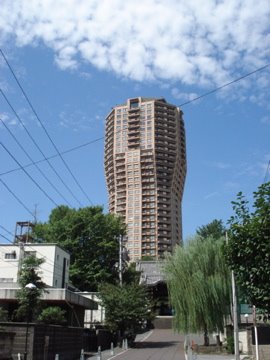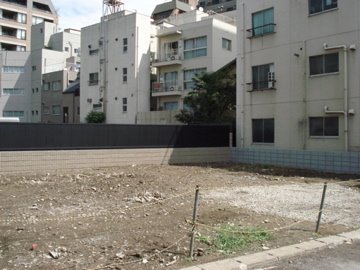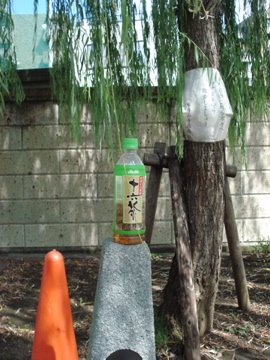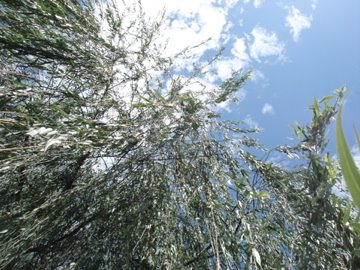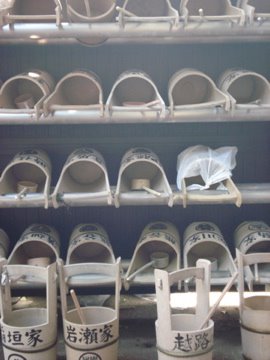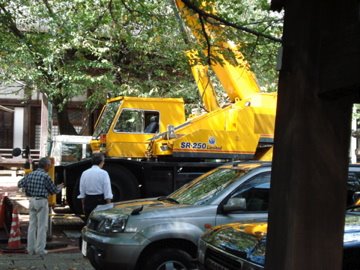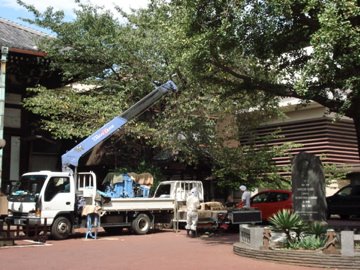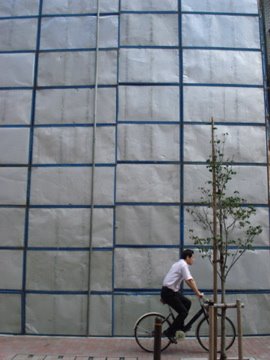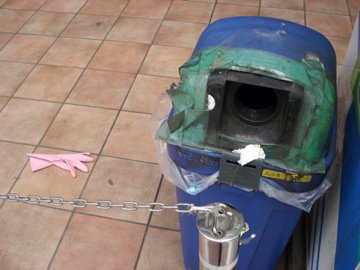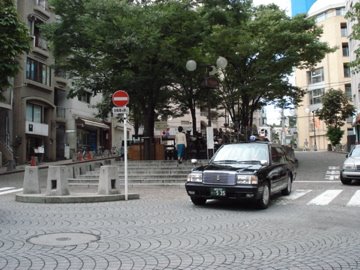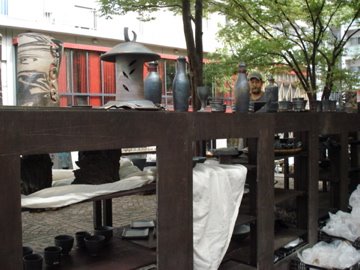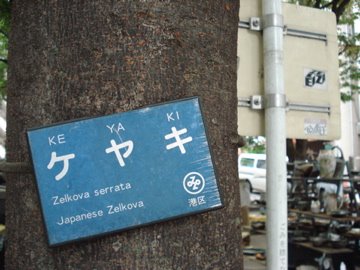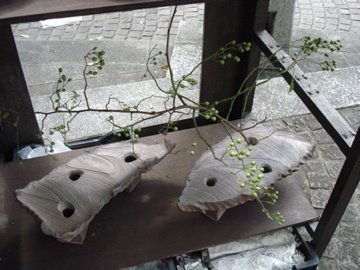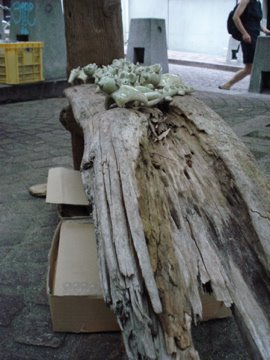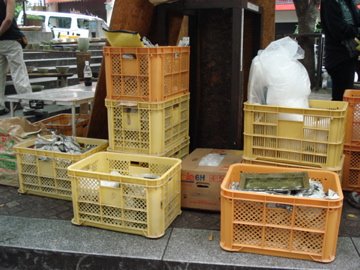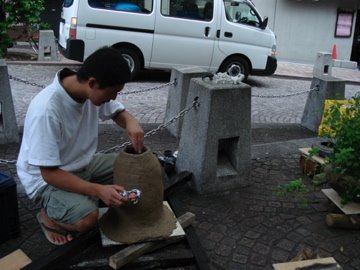The Line: Day 3
I must admit, I was a little worried. The third part of my assignment is to interact in some way with your space, which may include participations or interviews. But I don't know the Japanese language. And I don't know Japanese customs. And for everynight, I asked myself: "How will I interact with these people?" I tried to plan ahead, learning key phrases and answers to the questions that I would anticipate. "Interesting." "What are you doing?" "What kind of animal is this?" But instead I just went for it. Expecting the least expected so to say. And it actually worked out in my favor.
I wanted to interact with various spots within the line, rather than sticking to one particular place. First stop was the temple. Upon entering the temple gate, I quickly noticed the cranes were gone. The vans and the old men were gone. Well...there were still old men, and some old women. But today they threw in their 50 yen, claped their hands together, took a bow and began to pray. Never having done this myself, I also decided to step up to the plate and followed by example. I threw in my 10 yen, clapped my hands, bowed, closed my eyes, and began to pray. Pray for what? I dunno, but I did it nonetheless. With my eyes clothes, others would step up and throw in their money, and do exactly the same that I and previous visitors had done. After that experience, I noticed many others with flowers grabbed a bucket and laddle and filled it with water from the nearby pump. I have not had to pleasure of witnessing this, for there was construction during the days of my observations. They entered the side gate with their bucket and flowers, and proceeded to walk through what appeared to be a graveyard/memorial site. I did wish to do the same, but I did not have a dead loved one, at least not in Tokyo, and decided against it, for I saw it disrepectful to the dead and their families.
I continued walking down the line, the sculptor was not at his throne today. The glove was no longer on the ground. I almost walked past the bakery, but the smell grabbed me by the nosehairs and dragged me in. I bought a "hop chou a la creme" filled with a rich chilled custard which was very very very very very tasty. I mean yummy. Instead of the passerby, only familiar with the smell of the shop, I decided to become a customer, involving myself deeper into the sensory experience, which lead me to buy and taste one. Boy boy was it yummy.
I soon left the bakery and headed toward my final stop, of Patio Juban, right next to the Azabu-Juban station. I approached the racks of pottery while thinking of how I can interact with this space, to go from being merely an observer to becoming a part of it. I decided the best way is to become the customer. A flyer was posted advertising the "Kasama Stoneware Festival", a place where you can meet one of the 6 artists and buy their work. I began to browse through some of the items, interested by some, glancing over others. The prices seemed reasonable, but I didn't have much money to spend on pottery. I found a bowl of ceramic buttons, each for 200 yen, which I ended up buying. The artist came up to me and said "Hello," in very good English, which caught me off guard. I expected this interview to be very difficult, with an attempt at Japanese on my part. So with a sigh of relief I paid for the button. He then looked up to me and said, "If I may ask, what do you plan on using this for?" I told him that would turn it into a necklace. He then smiled and replied, "I do the same myself actually. Would you like some string with that?" We walked back to his work area as he unwound some thin brown string, streched it out, measured it, and cut it to an appropriate length. I thought this was a good time for me to ask him some questions about his work and I proceeded to do so. I asked him which work was his, and pointed out how fine and detailed some of his work was, some really beautiful pieces. I asked him how he mananged to impress such fine lines into the clay, and he gave me an interesting response. He told me that he uses bass guitar string, unwinds the wound string, and uses those thin strips of nickel and steel to make the impressions on the clay. Such fine, straight, and distinct lines really told me something about the care he puts into his work. He told me that this is his 3rd time doing a show in Azabu-Juban, to which he added, liked the area for there are many interesting people. He gave a slight chuckle when he said "interesting". I can't really tell if that's a good thing. He's doing this show with 5 other artists who are also contained within this cement block. He's worked with them before, but for the most part travels around the country with various pottery artists, staying for days in a particular area, and then moving on to the next place. I thanked him for the piece, shook his hand, and wished him luck with the rest of his show. He gave me his card and a thank you. I was on my merry way, with some experiences and evidence to show.

